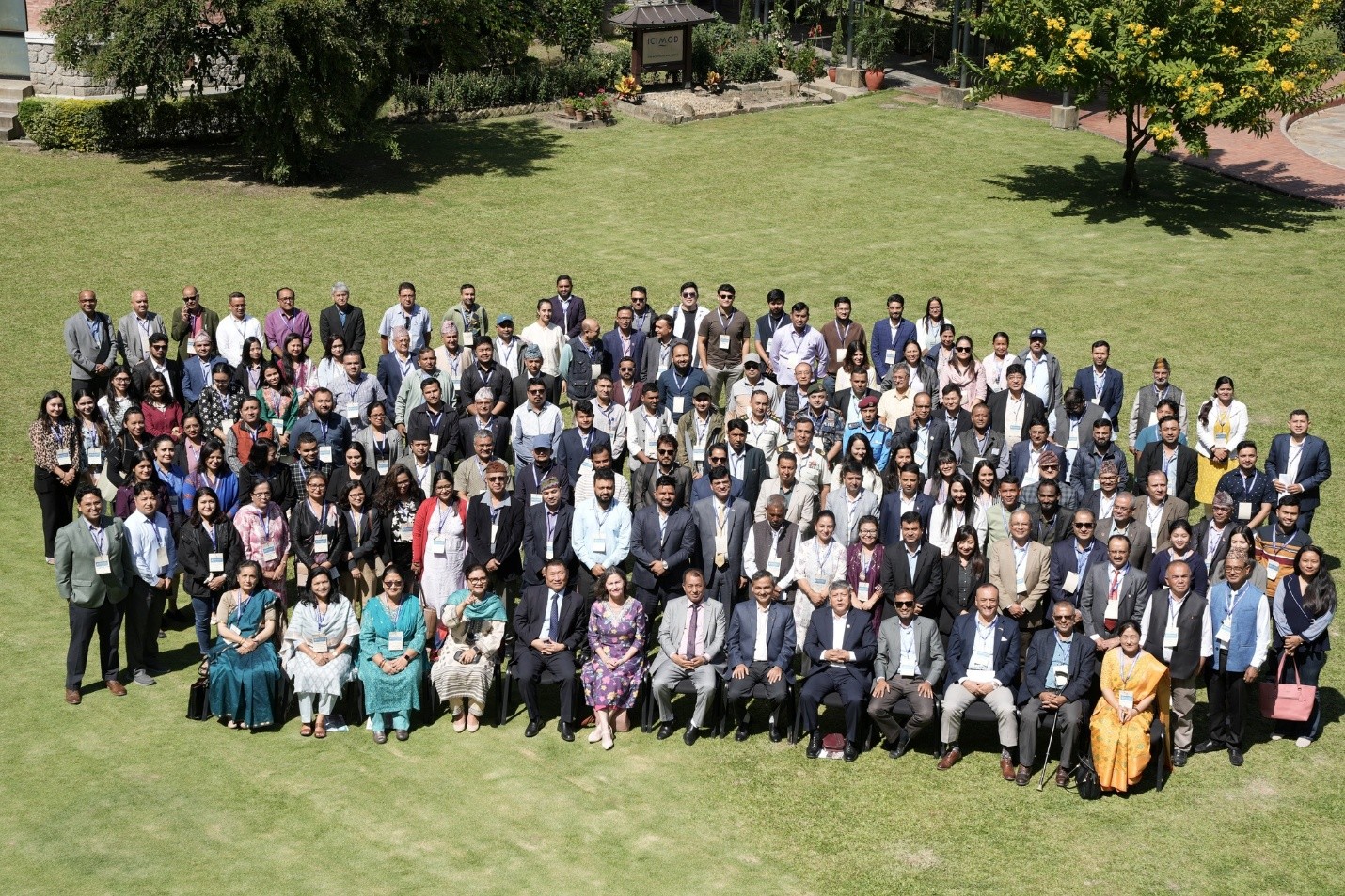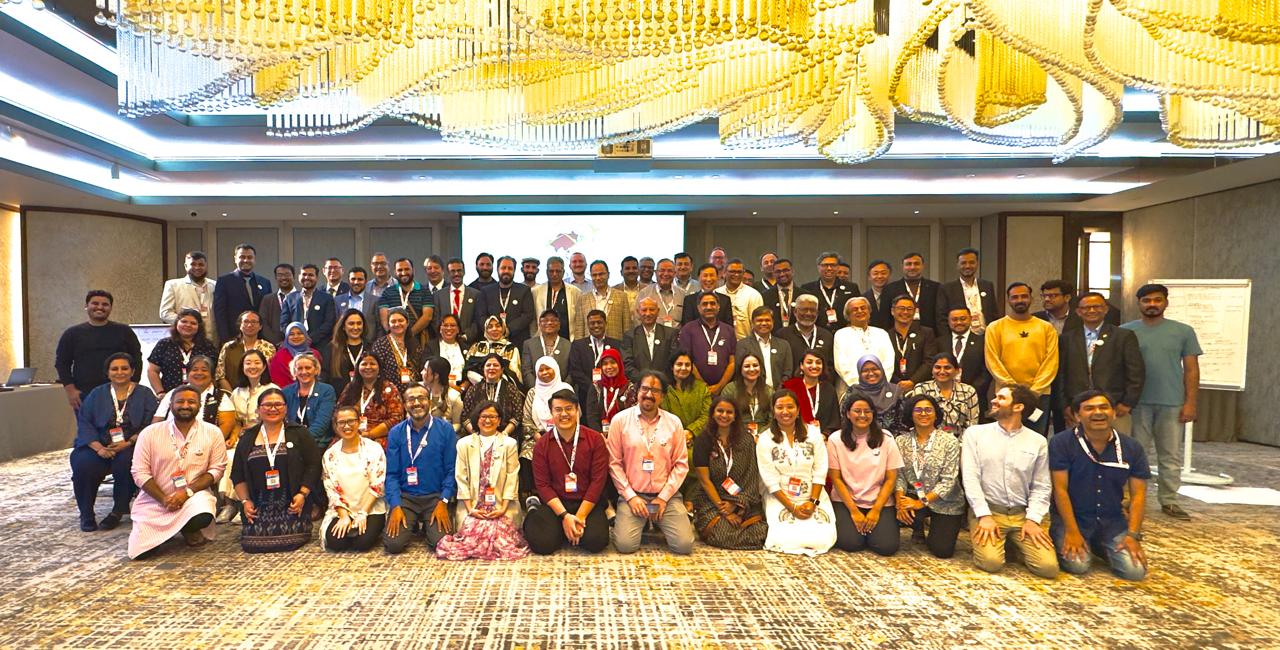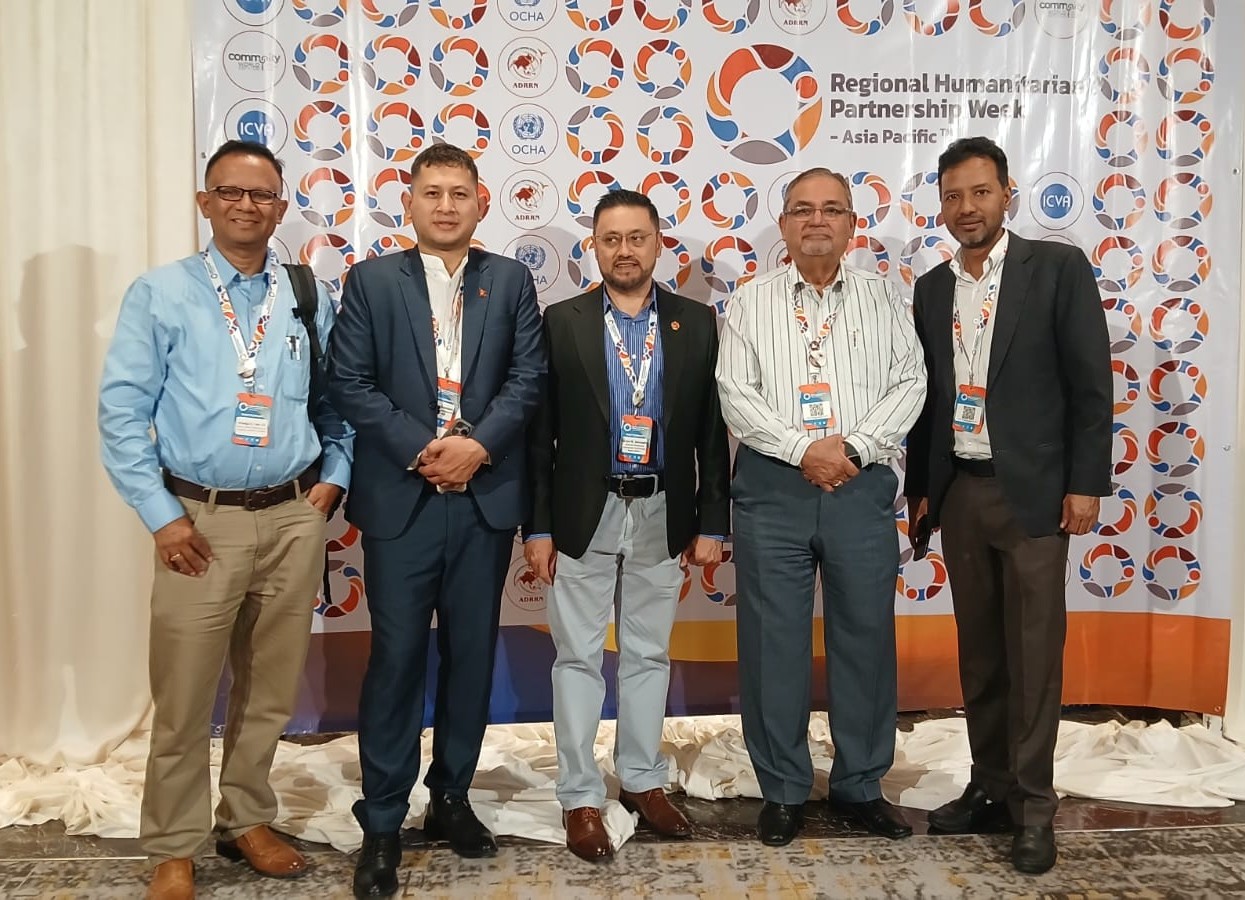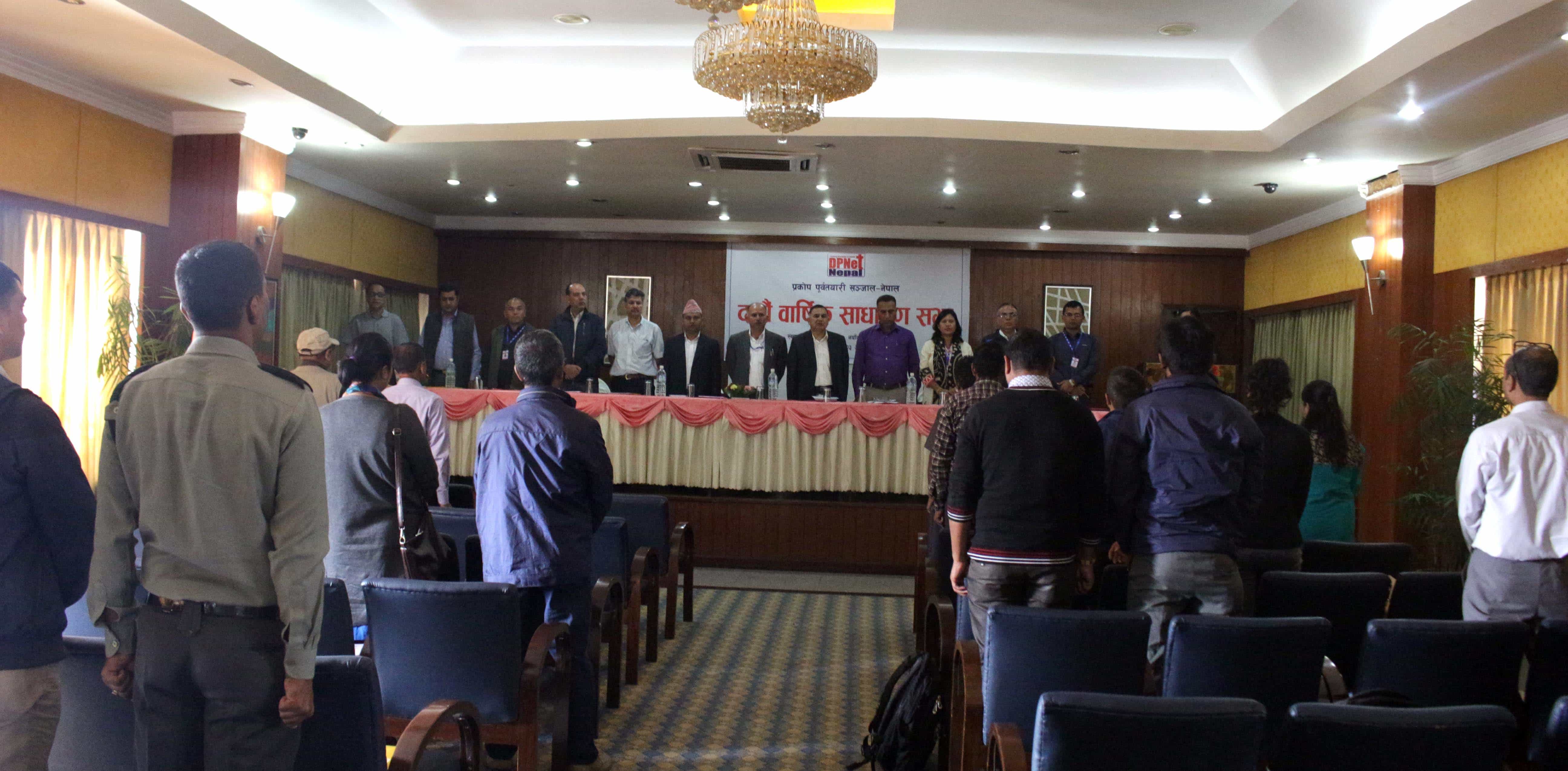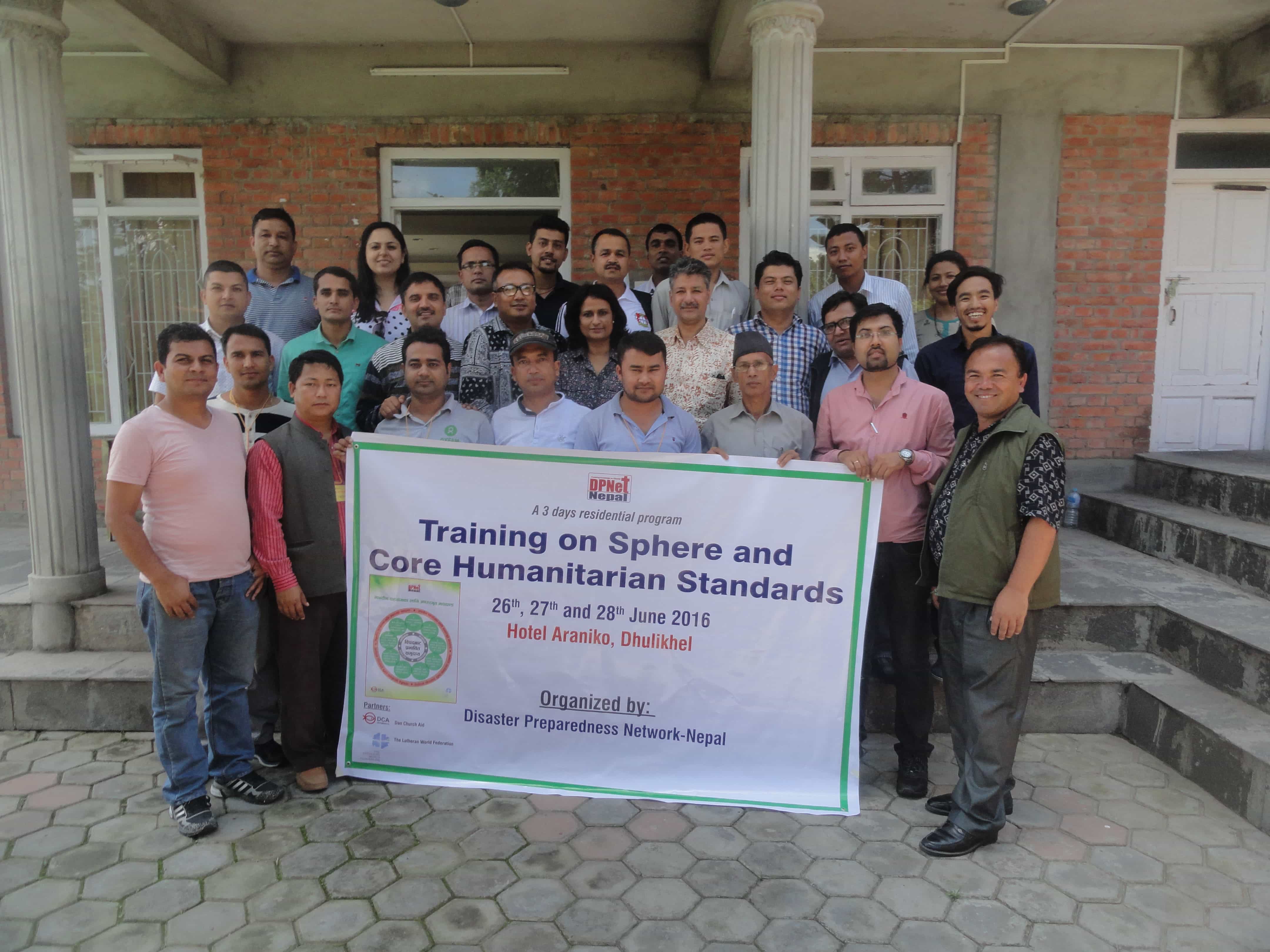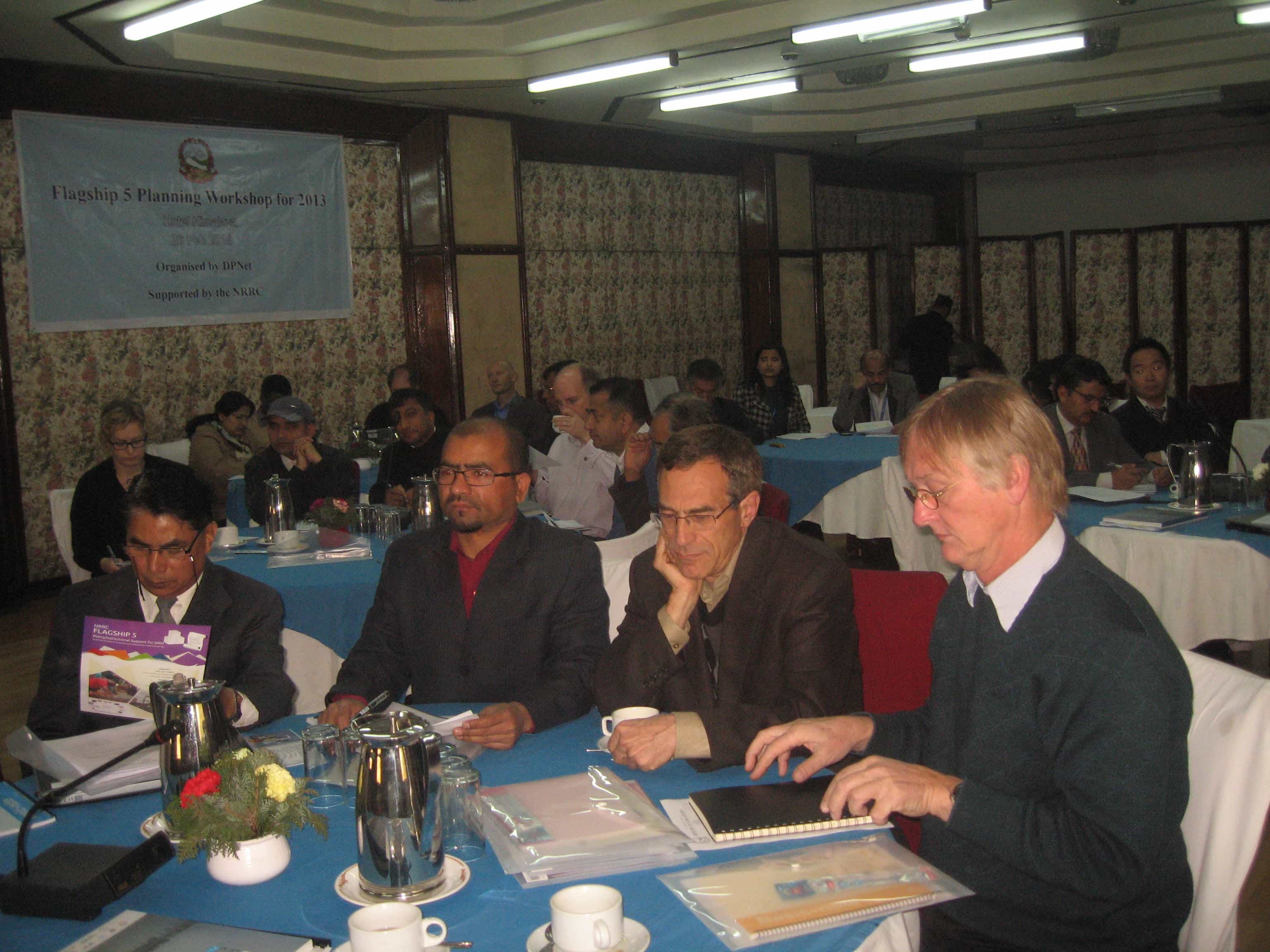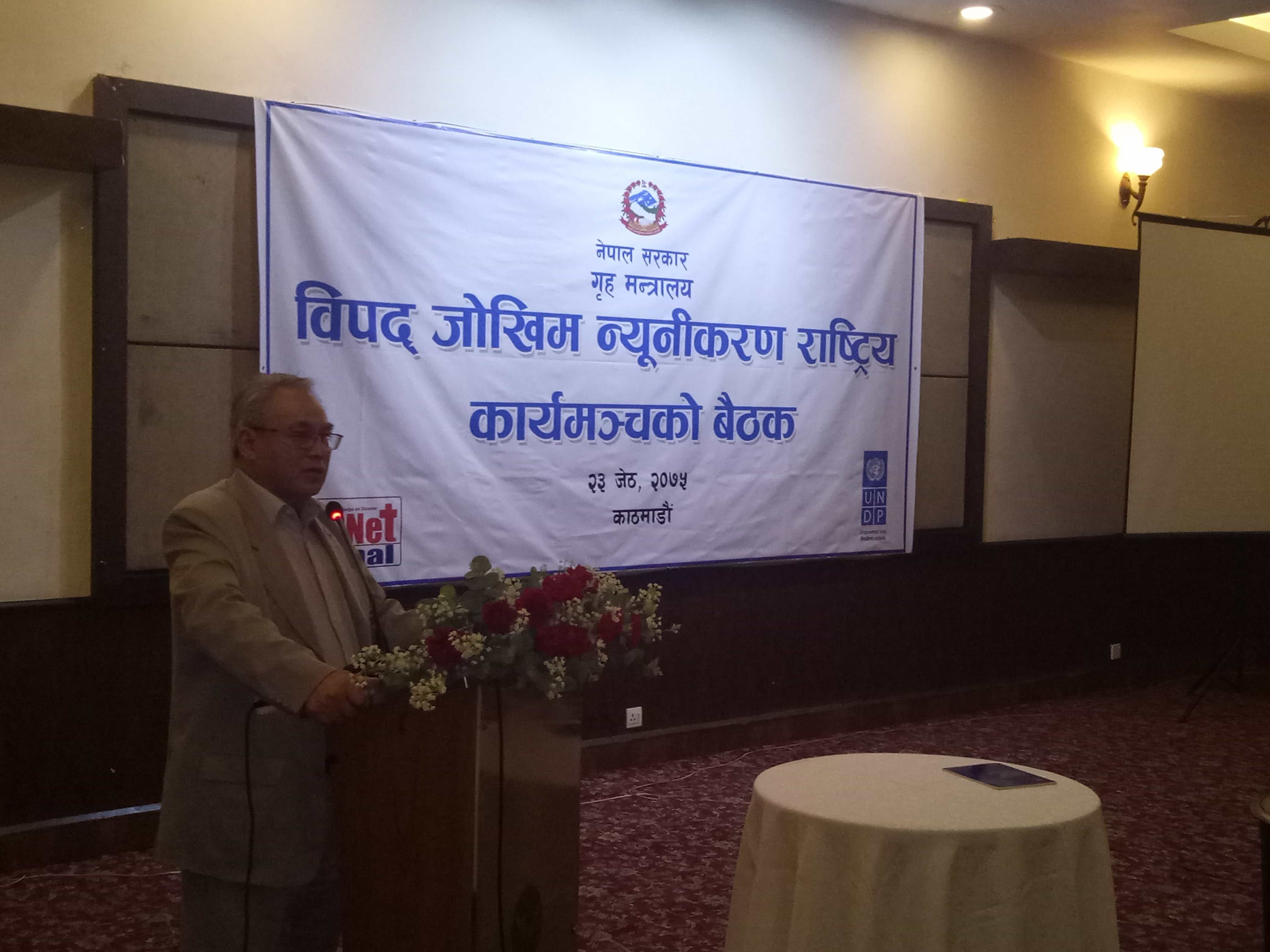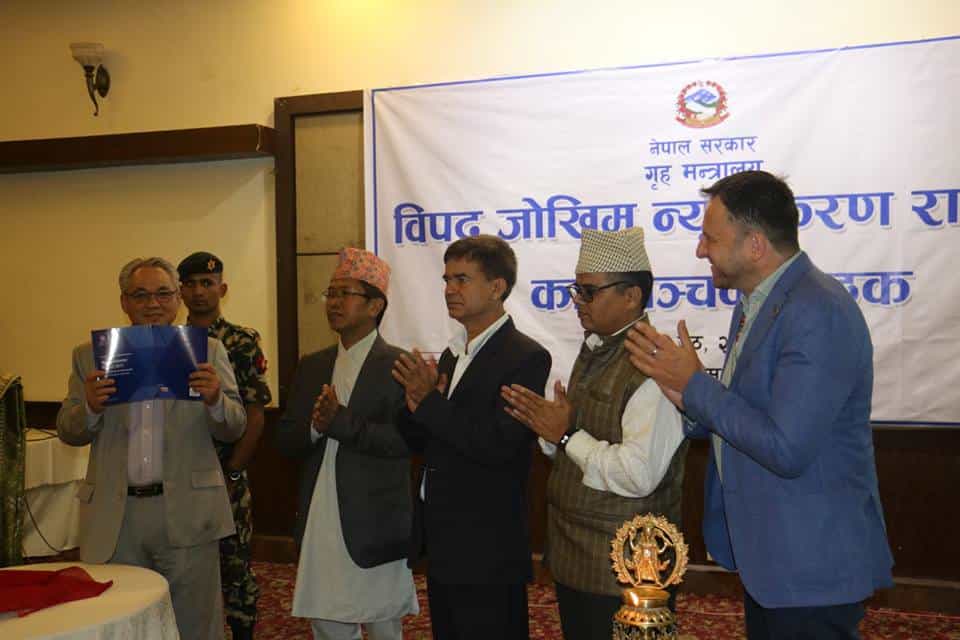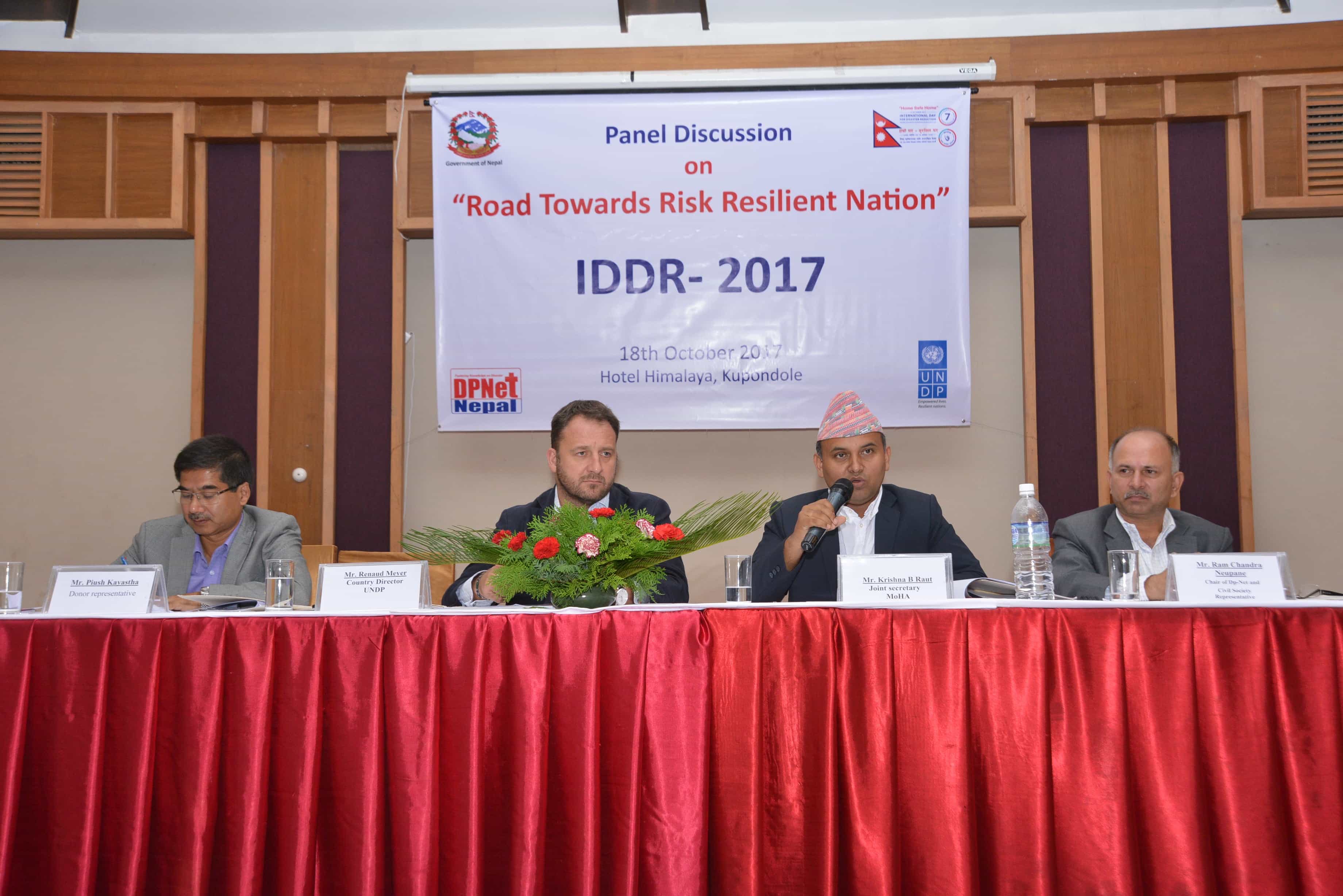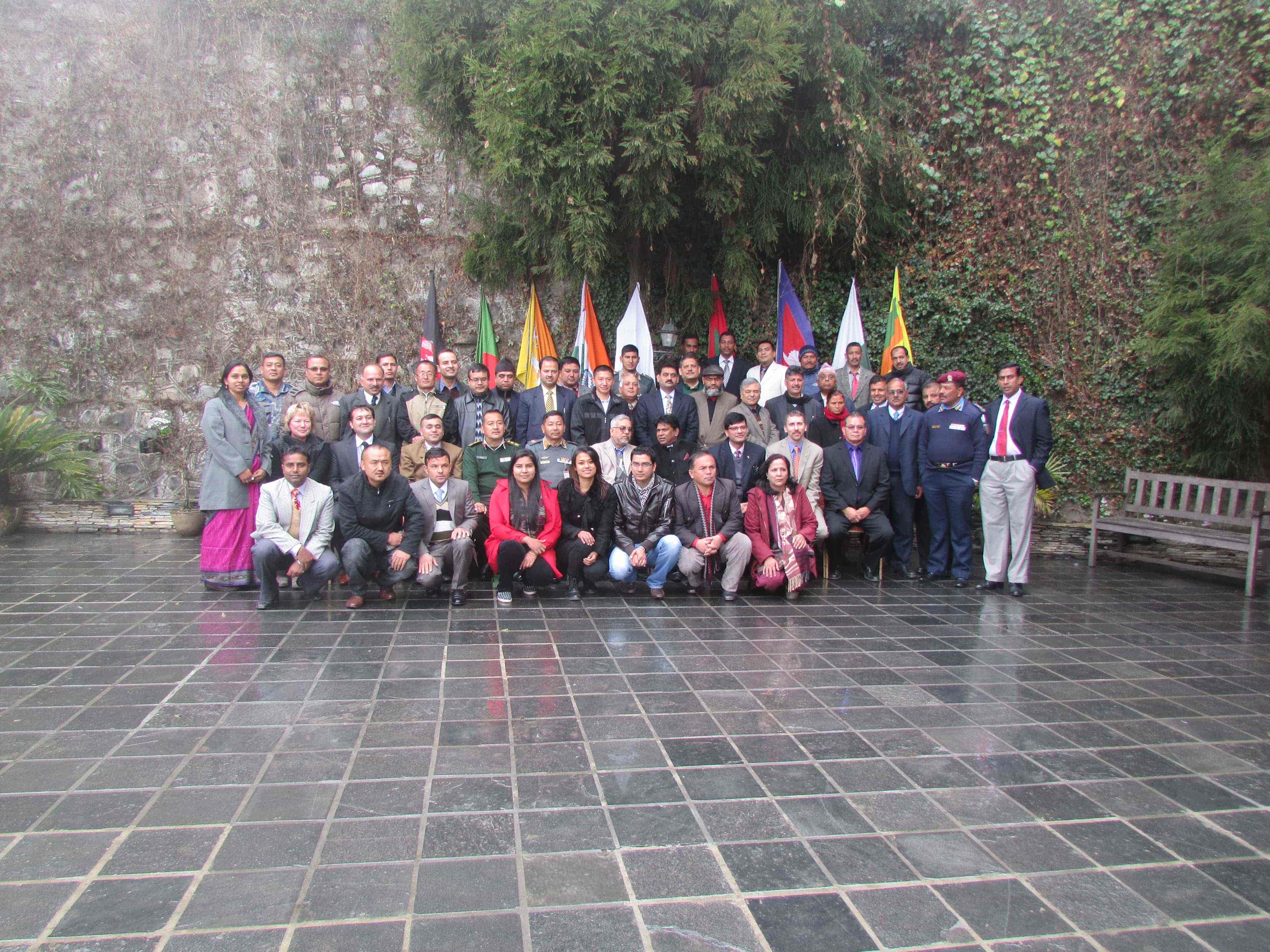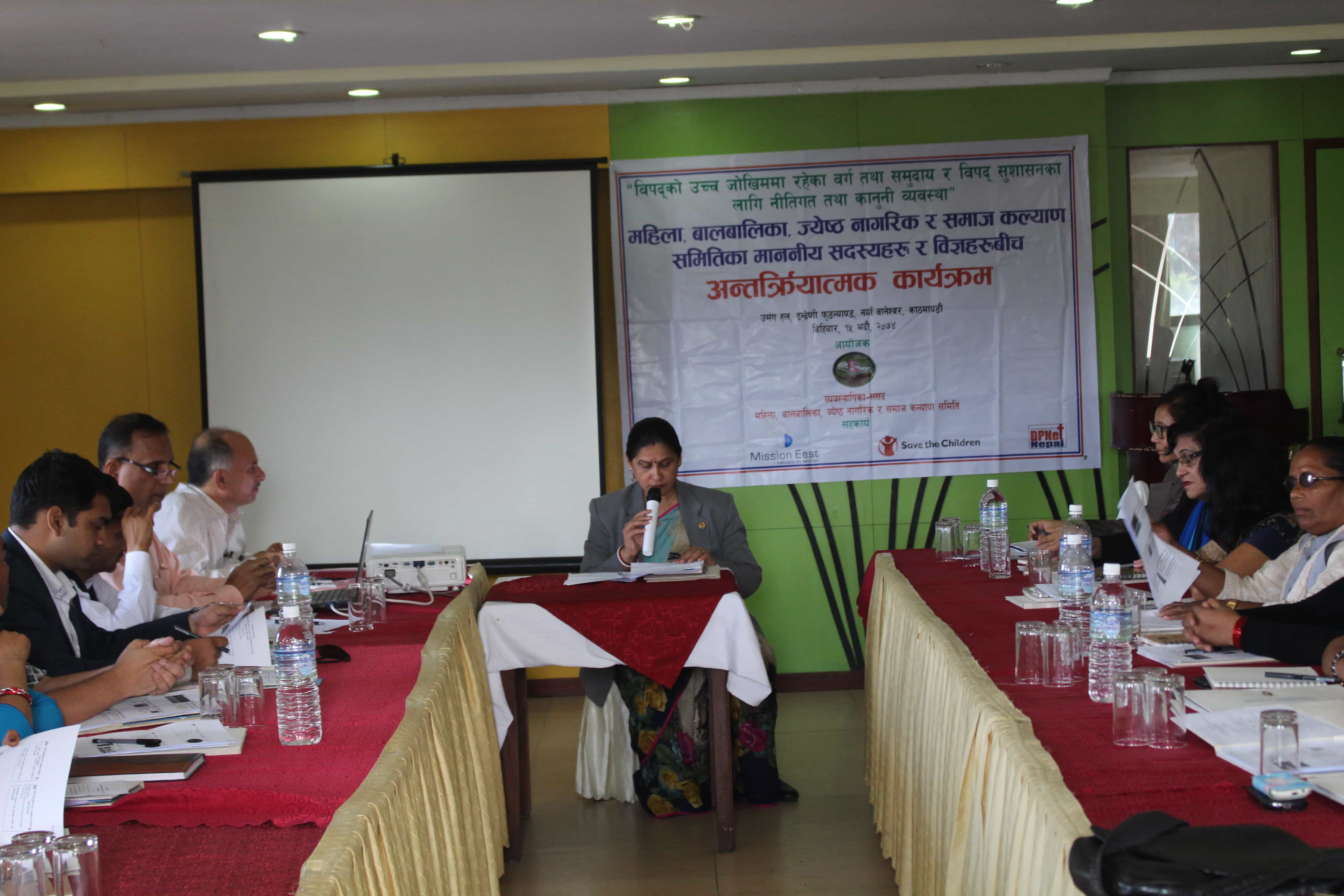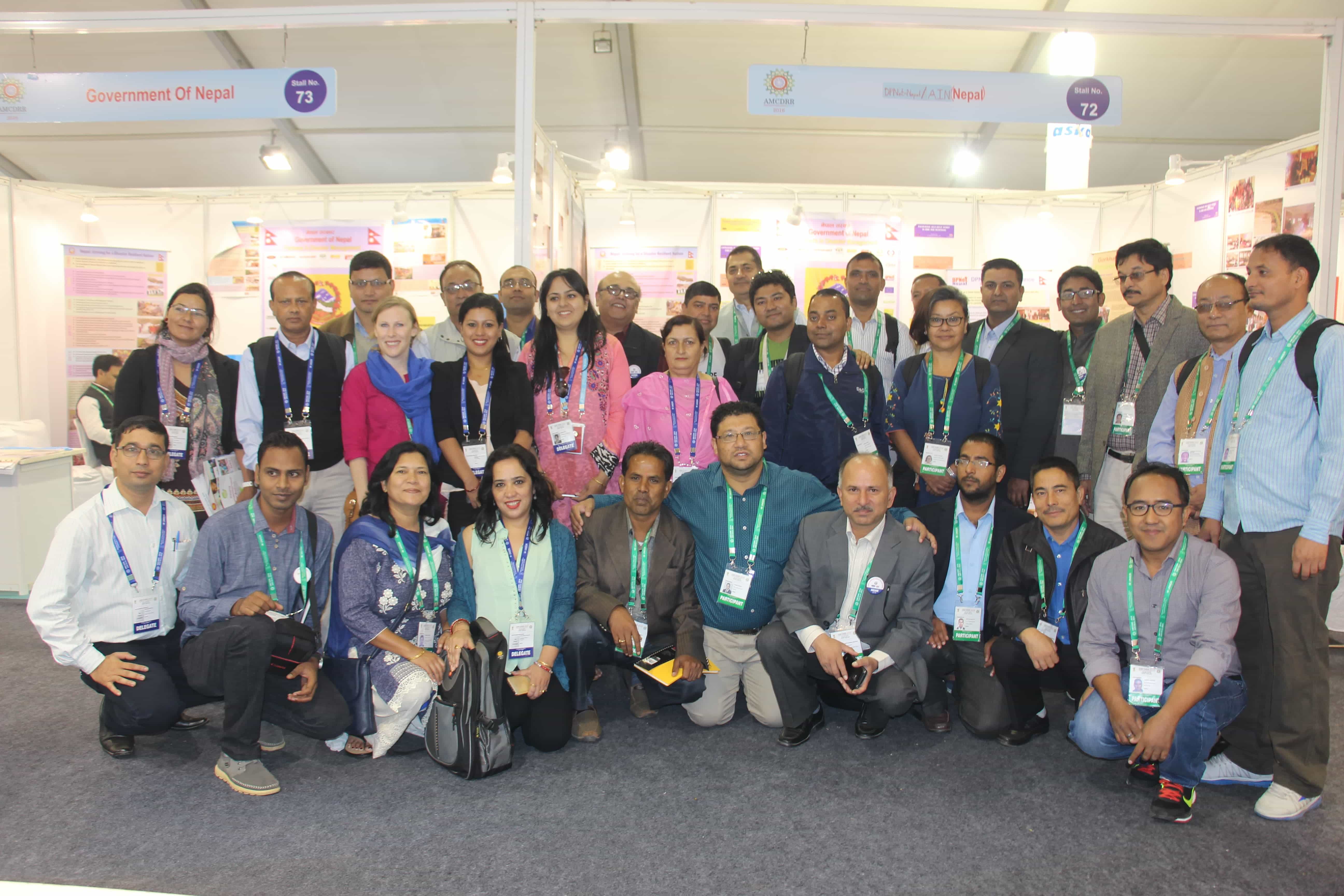Learning of Anticipatory Action Scoping Study
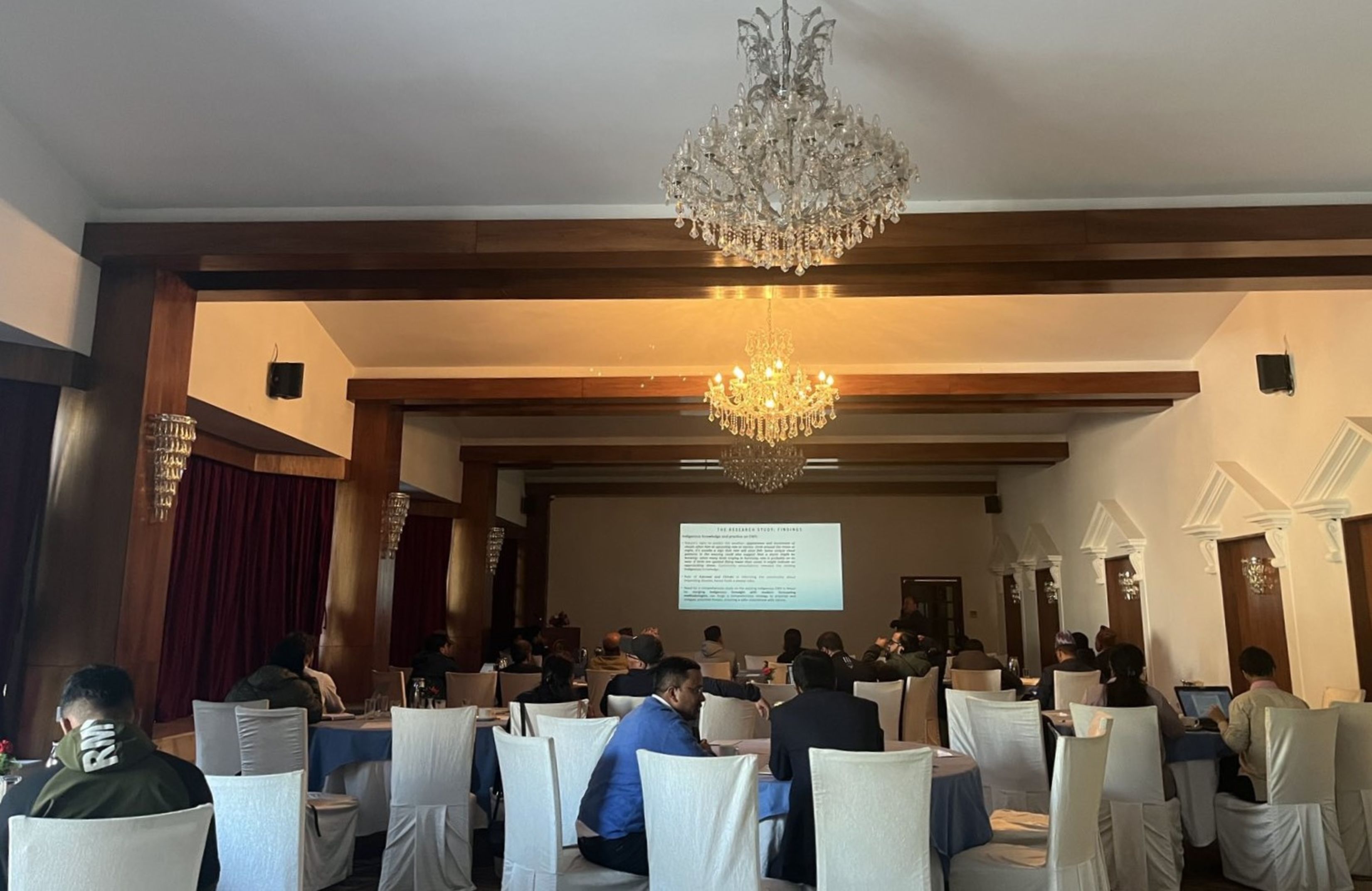
On November 21, 2023, DPNet Nepal, in collaboration with Oxfam, organized the Learning of Anticipatory Action Scoping Study. Mr. Surya Bahadur Thapa, Chairperson of DPNet presided over the event which was attended by guests from Governmental Organizations namely Mr. Rishiraj Acharya, Under Secretary, MOFAGA, Mr. Jiwan Prasad Dulal, Under Secretary, NDRRMA, and Ms. Shanti Kandel, Senior Divisional Hydrologist, DHM, and the representatives from different NGO/INGOs, Insurance, and Media.
The objective of the program was to recognize anticipatory action as a noble initiative in disaster management. The event focused on exploring, exchanging, and disseminating knowledge within this pioneering domain. Mr. Bimal Khatiwada, Oxfam, and Mr. Ram Gurung, DPNet Technical Advisor shared their presentations focusing on the findings and learning from the SCOPR3 project and Anticipatory Action scoping study. The program brought a way forward and recommendations for bridging the existing gaps and enhancing multi-hazard-focused anticipatory action.
News in Detail:
Dr. Raju Thapa, Vice-Chair, DPNet Nepal with a warm welcome to the participants moved forward to highlight the agenda of the program and shared in brief the importance of anticipation of risks and precision of data as an effort to mitigate the disaster risk through anticipatory action. He introduced in brief the evidence-based study related to policy regulation conducted by Oxfam in collaboration with ARDS “Strengthening Community Preparedness, Rapid Response and Recovery Program in Asia-Nepal” as an initiative of anticipatory action. He added that; regardless of the ‘no regret theory’, it may lead to social disputes, therefore the development partners must apply their experience to mitigate challenges in the absence of a comprehensive policy framework. Practical implementation is crucial to addressing issues in this evolving strategy.
He further underlined DPNet’s initiative in assessing the needs of families affected by the Jajarkot earthquake, emphasizing the significance of anticipatory action. He added that, despite the absence of a formal policy, the development sector, in collaboration with local government, has actively been engaged in anticipatory action and the utilization of cash support has proven to be a valuable tool in anticipatory action. The Ministry of Foreign Affairs and General Administration (MoFAGA) and the Ministry of Home Affairs (MoHA) are also actively involved and the National Disaster Risk Reduction and Management Authority (NDRRMA) stands out as a key stakeholder, underscoring its central role in coordinating and implementing anticipatory action measures in the country.
He highlighted the need to implement and bring to applicability the legal provisions formulated by NDRRMA regarding Anticipatory action which would be useful and aid in DRM, and shared with the floor that the DPNet ORC consists of more than 1200 documents among which the document on “Scoping Study on Anticipatory Action in Nepal” have been uploaded under the ‘reports’ category.
Mr. Surya Bahadur Thapa, Program Chair and DPNet Chair expressed thankfulness towards Oxfam Nepal for their research and for the collaboration and coordination with DPNet to organize this notable event. He emphasized the role of DPNet as a common platform for DRR and its commitment to providing coordination, facilitation, and a platform for coordinating among the organizations working on DRR. He acknowledged the dual nature of anticipatory action (both positive and negative aspects) and underlined the need for understanding the practicality and reality of anticipatory action in Nepal. He highlighted the importance of the involvement of governmental bodies.
Mr. Bimal Khatiwada, Oxfam gave a brief on anticipatory action highlighting that it not only means cash support, but also support of nonfood items like shelter kits, risk transfer, and sustainable micro-finance access. He moved forward to share about the project on “Strengthening Community Preparedness, Rapid Response and Recovery Program in Asia-Nepal Project (SCOPR3)” highlighting the purpose, key outcomes, the results observed, new initiatives, and the learning made. The project was executed throughout the 40 communities from Bhimdatta, Dodhara Chandani, and Beldandi from Kanchanpur and Parsuram from Dedeldhura, reaching 19,300 populations.
The project was based on resilience and climate justice ensuring the co-led efforts for enhanced capacities for disaster preparedness, response and recovery, and relief and educating the communities on local hazards, vulnerabilities, and risks, empowering them to formulate and implement disaster risk reduction plans. Collaborating with women, youth, and private sector entities, the initiative established local structures for timely and effective responses to crises. The ultimate goal is to provide vulnerable households with the skills and resources needed to stabilize and strengthen their economies before and after disasters, contributing to social protection mechanisms and livelihood risk mitigation plans in Nepal. The project’s learning outcomes are informed and improved community-based disaster risk reduction, response, and recovery practices at both the policy and implementation levels in Nepal.
3 outcomes; Capacity Sharing, Asset Protection, and learning and sharing were achieved from the project execution. He highlighted the municipalities that formulated Cash voucher assistance guidelines and endorsed them but the gap still lies as it hasn’t been endorsed at the national level. As a part of anticipatory action, the project also assisted in livestock insurance of one thousand households for risk transfer and supported in operation of ten micro-enterprises like noodle factories with the initiation of women and marginalized groups. It also made efforts to prepare the River Basin Industrial Plan and conducted a scoping study on anticipatory action.
Another aspect is the Annual Impact Reflection (AIR) in which the community members come together and interact on a free base rather than being based on a log frame. He further added that frequent inter-governmental transfer meetings are held and regional sharing is conducted (virtual or Physical) for sharing the learning. Oxfam in collaboration with DCA conducted a Group cash transfer and constructed a fishpond, fencing in common vegetable farming, riverbank protection applying nature-based solutions, and community toilets construction was done.
The project SCOPR3 has demonstrated significant advancements in achieving its goals through evidence-based investments in initiatives such as PCMA, BCP, RBIP, and SSME scoping. The application of the 13 feminist principles in Local Humanitarian Leadership (LHL) has proven essential, emphasizing power balance and showcasing promising results. The project recognized the challenges in engaging the private sector without a win-win approach. It highlights the importance of a well-balanced mix of approaches, emphasizing the prerequisite of social preparedness for both disaster readiness and economic activities in poor and vulnerable communities. The experience with Flood Early Warning Systems (EWS) reveals that newly established DRR units in municipalities face challenges in mechanisms and expertise, raising questions about community trust in received data. The project’s high degree of flexibility, alignment with government priorities, and application of appropriate mix approaches prove cost-effective, fosters ownership, and facilitates easy implementation. These insights contribute to the overall learning and success of Project SCOPR 3.
Mr. Ram Gurung, Technical Advisor DPNet shared his presentation on “Finding Sharing on Research Scooping Study on Anticipatory Actions in Nepal”. He overviewed the research background as anticipatory action is gaining attention in Nepal, especially as a long-time partner in disaster management. This project is associated with the third outcome activity, focusing on outlining the project’s objectives, key policies, and plans related to Disaster Risk Reduction/Climate Change that support anticipatory action, as well as the early warning structure and communication mechanisms. The geographical coverage of the project lies in four municipalities of two districts: Dadeldhura: (Parshuram Municipality) and Kanchanpur (Dodhara Chandani, Beldandi & Bhimdatta Municipalities).
Mr. Gurung displayed the major purpose of the research was under anticipatory action in Nepal, focusing on policies, plans, early warning systems, and community perceptions related to disaster risk reduction and climate change. He provided a brief overview of research study findings: The National Disaster Risk Reduction Strategic Plan 2018-2030 focuses on enhancing resilience by improving preparedness, and response, and integrating risk reduction into national policies. A key aspect is Indicator 6, which emphasizes improved availability and accessibility of early warning systems for multiple hazards. Success is measured by monitoring multi-hazard systems, ensuring population access to early warnings, and implementing forecast-based preparedness plans in high-risk zones. Additionally, Priority Area 3 emphasizes a holistic, risk-informed approach to investments in DRR reduction, involving both the public and private sectors.
UN agencies and INGOs leverage Forecast-based financing, incorporating cash-based anticipatory actions and boosting private investment in disaster risk reduction. The plan underscores the need to adapt the National Disaster Response Framework (NDRF) and the Disaster Preparedness and Response Plan (DPRP) to focus on forecast-based emergency preparedness and response mechanisms. Mr. Gurung stressed the need to identify the gaps in the forecast-based plan. The narratives in the past and present must be acknowledged. He emphasized that the forecast-based plan goes beyond cash considerations, encompassing various aspects. Implementing cash-based anticipatory actions at the local level, along with early actions based on the forecast plan, forms an effective early warning system. Referring to the 2020 National Disaster Risk Financing Strategy, he explained pre-arranged financial mechanisms aimed at mitigating financial risks. The proposed actions include enhancing hazard monitoring, integrating weather-based forecasting into agricultural insurance, and incorporating early warning information into pre-financing mechanisms.
He shared evidence of the World Bank and Nepal Partnership to strengthen Climate and Disaster risk response as a 50-million-dollar financing agreement for contingent financing that can be availed in the case of a natural disaster or health emergency in the country. He mentioned that MoFAGA is working on introducing a ‘Cash Distribution Guideline’ while the ‘Shock Responsive Social Protection (Operation & Management) Guideline’ has been drafted by NDRRMA. The draft includes proactive distribution of monetary support and tangible resources, upfront risk mitigation efforts, and the provision of predictive monetary support and cash no later than ten days before the forecasted events. He also mentioned the local level policies, plans, and efforts in enhancing anticipatory activities as some Local Governments have implemented cash and voucher assistance anticipatory activities in support of various development partners, some developed forecast-based preparedness procedures, and some municipalities have formally endorsed the anticipatory cash guidelines. Summarizing the efforts in mitigating the climate change issues, Mr. Gurung highlighted the study and approaches of the “Karnali Climate Action Education Program” (KCAEP) for Karnali Province and in a few other municipalities that have developed protocols to address the effects of cold waves. He emphasized that a stronger forecast makes it easier to establish the EWS. The mechanism prioritizes and initiates facilitation for different groups, such as pregnant women, lactating mothers, and infants.
NDRRMA’s Monsoon Preparedness and Response Plan, 2023, permits only UN agencies to provide cash assistance based on forecasts, creating uncertainty about the participation of INGOs in such initiatives. These issues and gaps create significant challenges and uncertainties in implementing these initiatives. The Federal Government based on the standard, prevents other non-government agencies from directly distributing cash. Non-government agencies are limited to providing in-kind support through a one-door system. A significant challenge in anticipatory actions is the potential for conflict if relief is provided before a disaster, and the disaster impacts those without assistance while sparing those with assistance. This could lead to disputes that might escalate, possibly necessitating federal intervention and the use of force to maintain order. Discussing key stakeholders, MoHA and NDRRMA play pivotal roles in disaster management, policy formulation, and coordinating efforts from the federal to local levels. Additionally, local governments and development partners such as UNICEF, Start Fund, EU, WFP, Danish Church Aid, Save the Children, Nepal Cash Coordination Group, Nepal Red Cross Society, and Mercy Corps are actively involved in contributing significantly to the overall effort. He shared a timeline of AA in Nepal, spanning from 2015 post-earthquake to 2023.
Additionally, he discussed the incorporation of Indigenous knowledge and practices in EWS, emphasizing existing indigenous EWS in Nepal by blending indigenous anticipation with modern forecasting methodologies. He stressed the significance of accurate EWS, noting that even a single mistake in a hundred early warning systems could have an impact. Furthermore, he underscored the importance of disseminating EWS information across all municipalities. Insights from development partners implementing anticipatory actions include the identification of triggers in a single hazard system. Notably, Oxfam’s involvement is marked by a focus on gender considerations, as evidenced by gender analysis conducted for DRR/CC. Recognizing the varying impacts of climatic changes and post-disaster consequences across genders, Mr. Gurung also emphasized the need to enhance community-based approaches. In conclusion, he highlighted the importance of developing proactive guidelines for international non-governmental organizations and fostering collaboration mechanisms to create a flexible response system.
Mr. Shyam Jnavaly, Technical Advisor, DPNet underscored the need for the orientation of anticipatory action to be comprehensive, encompassing all disasters rather than solely focusing on floods. He emphasized the need for an expansion of the research scope concerning Anticipatory Action and advocated for the identification of related provisions, emphasizing the importance of a comprehensible approach that addresses all aspects of disaster. He recommended that mechanisms for risk reduction, mitigation, and Anticipatory Action should run parallel rather than being distinct concepts. Furthermore, he suggested the incorporation of Anticipatory Action within the broader framework of disaster preparedness, marking a shift toward a more inclusive and integrated approach.
Mr. Prakash Khadka, PIN highlighted the proactive efforts of PIN in the realm of anticipatory action, specifically focusing on landslide-prone areas in Rasuwa. He emphasized the organization’s work in implementing early actions and establishing a funding mechanism. Mr. Khadka mentioned the utilization of funds sourced from the respective local government, showcasing a practical application of anticipatory action in addressing the specific challenges posed by landslide risks in the region.
Mr. Suraj Gautam, IHRR Emphasized the need to view anticipatory action in three aspects; risk assessment, regular monitoring of hazards, and early action. He stressed the significance of risk assessment in establishing thresholds and incorporating components of DRM as a standard for a coordinated approach. He raised questions about the relevance of individual household assessments for community-wide initiatives and recommended either group transfers based on community assessments or individual assessments with corresponding household-level assistance. He underscored the importance of uniformity and effectiveness in assistance advocating for universal standards, suggesting the implementation of Department of Hydrology and Metrology standards universally to ensure consistency in coordinated assessment practices.
Ms. Shanti Kandel, DHM highlighted that hydro-generated hazards are relatively easy to address when establishing EWS. This could be a key factor in the initiation of EWS, particularly for floods in Nepal. Given that over 80% of disasters in Nepal are hydro-oriented, significant progress has been made in the case of flood EWS. Ms. Kandel acknowledged the DHM as the second pillar in the EWS framework. The DHM has adopted various technologies with support from development partners, although there appears to be a gap in strengthening and recognizing the DHM. The importance of the “Leaving No One Behind” approach was emphasized for Nepal, where DHM plays a crucial role as the second pillar. Despite the adoption of numerous technologies and support from development partners, there is a challenge for DHM in deciding how to disseminate forecast reports to reach a larger community effectively. She mentioned that recommendations, a way forward, and suggestions to enhance the recognition and strength of DHM are highly appreciated by DHM.
Mr. Pallav Panta, Atullya Foundation stressed on the need to incorporate the needs of people with disabilities while anticipating the needs and during anticipatory action on disaster risk mitigation efforts. He emphasized the need to assess the disaggregated data within disability as disabilities have a lot of variations according to which the needs vary too. Assessing the disaggregated needs will aid in providing support based on the needs of the vulnerable groups.
Mr. Jiwan Prasad Dulal, NDRRMA highlighted the fact that the present legal procedures are challenging regarding the cash transfer. He emphasized the need to conduct research and studies that would add value in exploring the ways to manage loss and damage at the federal level through insurance policies.
Mr. Rishiraj Acharya, Under Secretary, MOFAGA highlighted that MoFAGA actively supports rural and urban municipalities in DRR and Climate Change efforts. Recognizing the importance of anticipatory action, the government has dedicated over a year to preparing the Cash Assistance Operation Procedure Guideline. Despite perceived risks and the government’s limited experience in this field, the insights gained are crucial for shaping the guidelines. He mentioned consulting various development organizations after post-disaster events in Jajarkot, West Rukum, and Bajhang, seeking input on multipurpose cash distribution. He assured coverage of both conditional and non-conditional assistance.
Mr. Acharya shared that on November 27th and 28th, 2023, MoFAGA plans to organize a discussion program to gather input from stakeholders and address any unnecessary domains, incorporating the feedback into the guideline. Highlighting the potential challenges if cash assistance proves ineffective, he pointed out the recent government declaration to assist in earthquakes based on self-announcements of casualties. While the government will provide technical support, an evaluation is necessary to determine needs. Regarding the cash voucher modality, he stressed its impact on social security, as discussed in the report. The report’s recommendations can offer valuable feedback for the guideline, aligning with federal-level facilitation and high-level practices.
Mr. Ram Prasad Bhandari, Technical Advisor DPNet expressed curiosity, questioning whether cash transfer is essential and if cash assistance serves as a substitute for relief post-disasters.
Mr. Keshav Malashi, ISET underlined the importance of prioritizing the concept of multi-purpose cash and incorporating Psychosocial Counseling as anticipatory action efforts.
Mr. Bhawaraj Regmi, NGO Federation discussed various forms of assistance, including commodity vouchers and bank transfers during disasters, and highlighted both conditional and non-conditional aid. Emphasis was placed on providing assistance based on a thorough need evaluation. Giving the example of flood-affected Dodhara, he shared an instance where individuals purchased agricultural tools with provided cash vouchers. Challenges were noted, particularly in determining the timing of assistance, specifically how many days in advance of the forecast. He also mentioned issues such as shopkeepers providing products past their expiration date and selling goods at higher prices than the market rate in case of cash assistance creating further problems.
Dr. Raju Thapa explained the high probability of a flood in the hilly region of Nepal in case of rainfall of 60mm within an hour. While most disasters in Nepal are hydro-induced, a few, such as landslides, are gravity-induced and can result in the blocking of doors, especially during the morning hours due to land creeping that occurs in the night increasing the risk of casualties. Dr. Thapa observed that debris accumulation, along with floods, can alter the direction of water flow, causing floods in unexpected areas. To manage this, cash assistance can be provided a few days before the predicted rainfall so that people can prepare for the worst. He pointed out that providing help before a disaster does have a chance of creating conflicts, as those who received help might be safe while others feel vulnerable. This may lead to arguments, possibly requiring government intervention and force to maintain order. Despite the potential for conflict, Dr. Thapa emphasized the positive aspects and lessons learned, suggesting that such anticipatory actions have been effective worldwide.
In 2019, the National Planning Commission (NPC) created an integrated framework for Social Security, based on past programs related to disaster and social security. This framework was submitted to the ministry, which retained it for about two years before returning it to the NPC. Considering Nepal’s significant investment in foreign loan interest and for social security, even a small manipulation or imbalance in those arenas can result in substantial losses which needs to be worked on, Dr. Thapa added.
He highlighted the importance of cross-idea fertilization through discussions like these. He also addressed the crucial role of insurance in anticipatory actions and emphasized the need for clarity in the one-door system. He praised MoFAGA’s efforts in preparing guidelines, recognizing that a lack of guidelines poses challenges at the field-level intervention.
Mr. Prakash Kafle, Oxfam underscored the vagueness of anticipatory action not just being limited to cash and voucher transfers. Anticipatory action is more like preparing as per the need assessed by anticipating the emergence to minimize the effects of disasters and also regarding social protection, but the financial obligations in Nepal seem very high. Mr. Kafle proposed to organize a discussion based on pre-disaster cash transfers, giving examples of the field-based documentation done in Tikapur, Rajbiraj incorporating both success and failure stories. The recommendations from the experience include strengthening EWS and enhancing the understanding of anticipatory action among the actors. Since MoFAGA is an important stakeholder, coordinated efforts should be made by all the governmental tiers to formulate uniform guidelines and raise awareness on volume transfer to enhance the management mechanism. Studies regarding pre-disaster cash transfer need to be carried out for clarity, he added and announced the conclusion of the program with concluding remarks.
